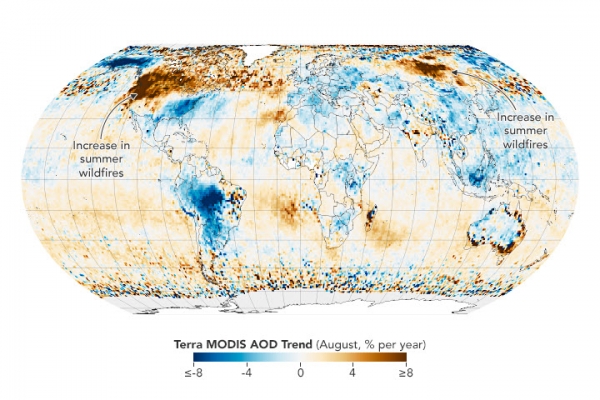NASA’s Terra satellite has been taking measurements of Earth’s atmosphere for more than two decades. One of the five sensors on board, Measurement of Pollution in the Troposphere (MOPITT), makes daily measurements of the air pollutant carbon monoxide.
Over the past two decades, MOPITT’s science team has observed a significant decline in global concentrations of carbon monoxide. “We wanted to know what’s driving that trend,” said Rebecca Buchholz, an atmospheric scientist at the U.S. National Center for Atmospheric Research (NCAR). “But that’s challenging to untangle because there are several sources of carbon monoxide, including fires, transportation, industry, and vegetation.”
Carbon monoxide also stays in the atmosphere for a few months, meaning it has plenty of time to mix and spread out. This makes it harder for researchers to pinpoint the sources or understand what factors are contributing to changes. But they do have ways of getting around this problem. By comparing MOPITT observations of carbon monoxide with measurements of shorter-lived pollutants that were released from some of the same sources, Buchholz and her colleagues were able to better understand where the carbon monoxide came from and why the concentration of the gas has fallen. They reported their results in Remote Sensing of Environment.
Continue reading at NASA Earth Observatory
Image via NASA Earth Observatory


